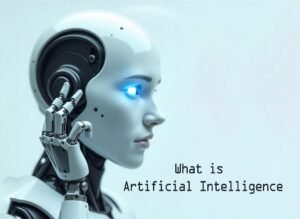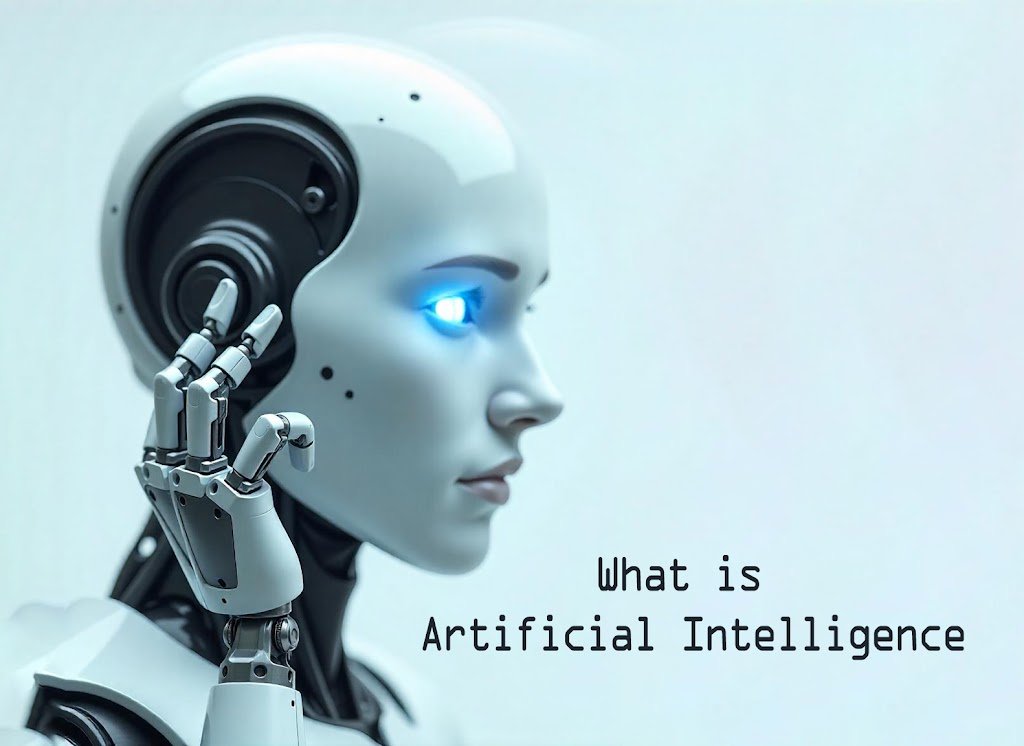Table of Contents
Table of Contents
1. Introduction
What is Artificial Intelligence (AI)? Do you know? Humans have used computers far more since they were first invented. We have to rely more on them as they use them for all of their work.
Their reliance has grown exponentially as a result of this. These machines’ speed, size, and capacity to work have all been greatly enhanced by humans, allowing them to complete our tasks faster and with less time investment from us.
You may have also noticed that artificial intelligence is getting a lot of attention these days, no matter where you look. You don’t need to worry if you don’t know much about artificial intelligence since I will explain everything to you today along with its significance. in order for you to have the answers to every query you may have by the time you finish reading this essay.

2. Artificial intelligence: what is it?
One kind of intellectual capacity that is created artificially is called artificial intelligence, or AI. It can also be thought of as a system’s artificial brain.
Artificial intellect, or artificial intellect or artificial brain in Hindi, is the complete version of the term. This is a simulation in which computers are imbued with human intelligence—that is, with highly developed minds capable of thinking and acting like human beings.
This is only done in computer systems specifically. This process consists of three primary processes: learning (where machines are fed knowledge and taught rules to follow in order to finish a task), The second is Reasoning, where robots are programmed to follow predetermined rules in order to advance toward outcomes and draw conclusions that are either approximate or definitive. The third is Self-Correction.
Machine vision, speech recognition, and expert systems are a few examples of specific AI applications.
Artificial Intelligence, or AI, is built to think as humans do. It works by mimicking how the human brain initially perceives a problem, analyzes it, determines what action is suitable, and then determines how to solve it. considers it while figuring it out.
In a similar vein of artificial intelligence, all the features of the human brain have also been imbued into robots to enhance their performance.
How does a voice recognition system operate?
What distinguishes the BS4 and BS6 engines from one another?
What is the Android OS?
The world first learned about artificial intelligence from John McCarthy. He was a computer scientist from America who initially presented this concept in 1956 at the Dartmouth Conference.
It has grown to be as large as a tree nowadays, encompassing everything from real robotics to robotic process automation. It has received a lot of attention in the recent few years since big data technology is a part of it. As a result of the day-by-day growth in the volume, speed, and variety of data business, many firms are wishing to implement this technology.
In contrast to human error, artificial intelligence (AI) has made it incredibly simple to find patterns in unprocessed data, allowing businesses to quickly gain deeper insights into their data.
3. Artificial Intelligence Types
When it comes to AI varieties, there are a lot of them. The primary categories of artificial intelligence are described below.
AI based on rules
The rule-based structure that we educate this AI serves as its foundation for operation. This system adheres to some unique guidelines, such as selecting option C if A is accompanied by B. At its most basic, rule-based AI is applied in a restricted setting.
4.Artificial Intelligence (AI)
This teaches artificial intelligence computers how to decide using data. Machine learning involves feeding data to computer algorithms so they can learn on their own. Numerous fields, including image identification, speech recognition, search engines, and customer service, use machine learning.
In-depth Education
A higher degree of machine learning is called deep learning. By teaching AI systems how to construct a hierarchy of concepts, this outperforms machine learning in terms of output. Deep neural networks are employed for this. Deep learning is therefore applied to speech recognition, image recognition, and natural language processing.
Processing of Natural Language (NLP)
By using natural language processing (NLP), machines can now comprehend and respond to human language. The machine needs to comprehend pragmatics, semantics, and grammar in order to do this. NLP is utilized in language translation, chatbots, and customer support.
Computer Vision
Machines are trained to assess visual data (images and videos) using computer vision. In this, machines are trained to examine pictures and movies, deduce information from them, and make judgments. Autonomous vehicles, image identification, and video surveillance all employ computer vision.
These several kinds of AI are all utilized to greatly simplify our life. These enable robots and computers to think and comprehend similarly to humans. We can benefit from a great deal more applications of AI’s power.
5. Artificial Intelligence’s advantages
These days, artificial intelligence (AI) is applied everywhere. It offers a wealth of opportunities that improve and ease our lives. Among AI’s benefits are…
Safer Environment
AI is employed in surveillance and security. Artificial Intelligence is used to evaluate data from sensors and CCTV cameras in order to identify crimes, disasters, and security breaches. In addition, AI is utilized in driverless cars, which can lower the number of collisions and fatalities.
Improved Medical Care
AI is employed to provide precise medical diagnosis and care. In order to provide clinicians with correct results, medical data is analyzed using machine learning and deep learning. AI enables doctors to identify illnesses early and begin treating them.
Better Support for Customers
Customer service also makes use of AI. Artificial intelligence (AI) solutions such as chatbots and virtual assistants can handle customer inquiries and complaints. It lowers expenses while simultaneously raising the standard of client service.
Productivity in Business
AI is also utilized to increase productivity and efficiency in business. Data analysis and automation using AI may automate a wide range of jobs. In addition to improving business outcomes, this saves time and resources.
6. Individualization
AI enables the delivery of tailored content and recommendations. Through an analysis of a customer’s interests and preferences, it assists in delivering personalized information and recommendations.
More advantages of AI abound. Our life is more efficient and easier when we use it. However, it’s equally crucial to use and implement it correctly. As a result, we need to apply caution when using AI to prevent problems or injury.
Artificial intelligence’s drawbacks
In addition to its benefits, artificial intelligence might have drawbacks if it is used and implemented incorrectly. There are certain drawbacks to AI.
Loss of Employment
Many jobs are becoming automated by AI, which may result in employment losses for a large number of individuals. The harm could be greater if appropriate caution is not used while using AI.
Data Security
AI makes advantage of private information. Its improper usage could compromise the privacy of this data. We must so take steps to guarantee the security and appropriate use of our personal information.
Reliance
The more AI is used, the more reliant people are on us. People may lose a great deal of money if these devices and computers malfunction. It is crucial that we continue to use our traditional knowledge and abilities as a result.
Prejudice
Bias may also exist in the data that AI uses. As a result, biased outcomes from AI are possible. As a result, it’s critical to properly validate and verify the data before studying it.
Safety Concerns
AI use has a lot of potential safety risks. Ensuring appropriate design and implementation is crucial for AI-powered devices and computers, including robots, drones, and autonomous cars.
7. What new information did you get today?
I sincerely hope that I have provided you with all the information you need to understand artificial intelligence, also known as artificial intelligence (What is Artificial Intelligence in English).
I kindly ask that all of you who are reading this spread the word to your friends, family, and neighbors so that everyone is aware of it and can take great use of it. To be able to give you more fresh information, I need your help.
I have always made it my goal to assist my readers in every way possible; feel free to ask me any questions you may have. Without a doubt, I’ll work to dispel those questions.
What was your impression of this article? Artificial intelligence: what is it? Please let us know by leaving a comment so that we can benefit from your insights and learn something new as well.

